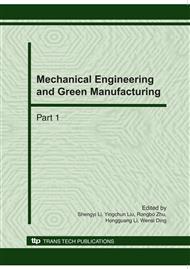p.1583
p.1587
p.1592
p.1596
p.1601
p.1605
p.1609
p.1614
p.1620
Investigation of Laser Welding on Vehicle Safety Parts
Abstract:
Based on many experiments of CO2 laser welding of high strength two-sided galvanized steel thick with 1.5mm to vehicle body, joint microstructure and stress-strain curves of specimen are acquired. It has inferred theoretically relations among critical power, welding speed and focal point position under given welding technological conditions. With coaxial and side-blown protective gas, craft parameter are optimized, the laser deep melt welding may avoid effectively heat-affected zone (HAZ) softened phenomenon, as well as welded porosity may controlled effectively. The experimental result shows that hardness value in weld zone becomes low with increasing of energy input, at the same time the cracked zone of tensile specimen, the dimple size and the distribution of cross-section in welding seam are also different, tensile crack of welding seam extends to the base metal, which indicates deep penetration laser welding can effectively avoid softening of welding joints during laser welding of high strength galvanized steel.
Info:
Periodical:
Pages:
1601-1604
Citation:
Online since:
October 2010
Authors:
Price:
Сopyright:
© 2010 Trans Tech Publications Ltd. All Rights Reserved
Share:
Citation:


